How to Grow Orchids in a Greenhouse
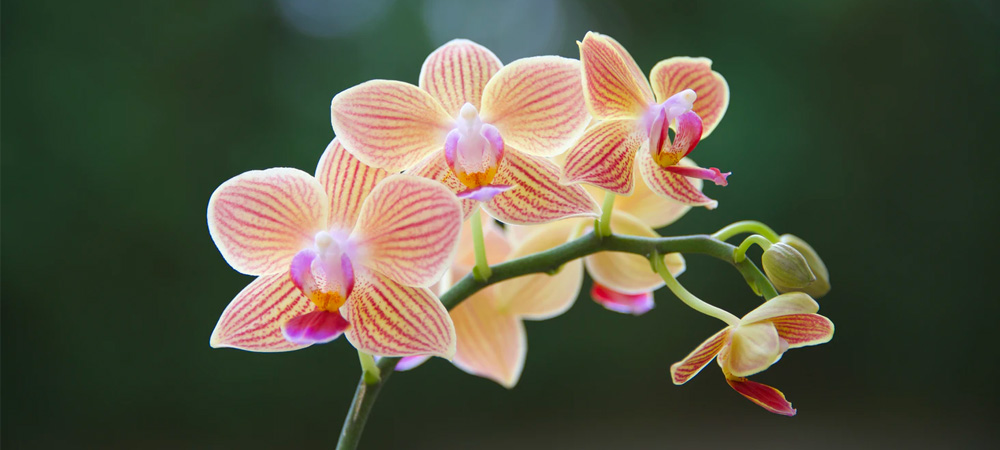
Orchids are among the most beautiful plants, but they are also known as being very difficult to grow. They don’t have to be though – they just need the right conditions.
Growing in a greenhouse will let you control as much as possible, making the process much easier than trying to get healthy orchids outside.
You’ll need to keep the humidity high, and night-time temperatures should be 5-10 degrees (Celsius) cooler than in the daytime. Good circulation of air is also a necessity. The amount of light needed can vary widely, depending on the plant variety, but for the most common orchids (Phalaenopsis), low light is required.
If you don't have a greenhouse, buy one from South West Greenhouses here.
Key Greenhouse Conditions for Orchids
An orchid-friendly greenhouse is not difficult to create. You’ll need just five key things:
- A high level of humidity.
- Warm temperatures.
- Fresh, clean air.
- The correct amount of light for the variety.
- A drop of 5-10 degrees (Celsius) during the night.
Slight Condition Changes by Variety
Orchids can be divided into a couple of general groups, based on the amount of light and temperatures they need to thrive.
Orchids that grow on the ground (usually called ‘terrestrial orchids’) don’t need as much light. They are used to forest floors and the covering of a leafy canopy overhead. They can also handle cooler temperatures.
Orchids that grow in the trees (called ‘epiphytic orchids’) require more light and slightly higher temperatures for best results.
Soilless Potting Medium & Temperature Control
Perhaps the biggest two changes in mindset for the aspiring orchid grower is that orchids do not grow in soil – they need what is called a ‘potting medium’ instead – and that they require not a constant temperature range, but rather a significant drop in night-time temperatures in order to bloom. If they don’t have both of these good things, or if they get too much of any one good thing, they will not do as well.
A third thing to keep in mind is that orchids in the wild grow up in trees, and so they get a lot of their nutrients from rain, not from the soil below them.
A great potting medium is a moisture of bark, peat moss, and perlite, often mixed in with some sphagnum moss or osmunda fibre. Usually, tree-growing orchids prefer more bark or osmunda fibre, whereas ground-growing species prefer more peat moss or sphagnum moss. The ratios of each depend on the species of orchid, so a little specific research or guidance is recommended for that – the seller should be able to tell you at the point of sale. Perlite helps the substrate drain well, so is used for both.
As far as temperature goes, you need a substantial drop at night, but it shouldn’t be more than ten degrees Celsius or less than five. That said, orchids suffer if they are in a cool draught, so avoid cooling with flowing air.
Related reading: How to Attach Bubble Wrap to a Greenhouse
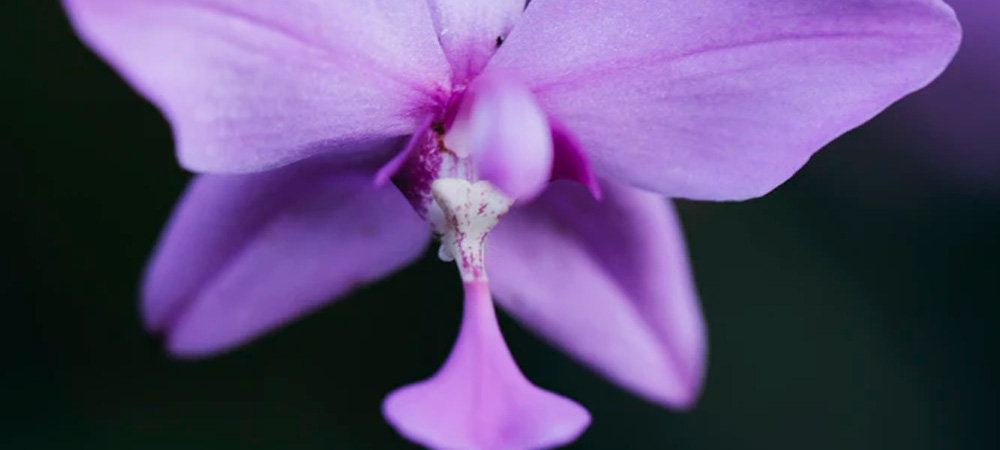
How Large Should Your Greenhouse Be?
Most of us want to spend as little as possible but get at least as much as we need. When it comes to buying your orchid-friendly greenhouse, start with what you need, and then do your pricing to see if it is within your reach. If budget is no object, however, then go big.
The greenhouse needs to be large enough for good air circulation without getting draughty, but it also needs to be kept within the right humidity levels and temperatures, which is more difficult the bigger the greenhouse gets. Orchids may not need a lot of room around them, but they also cannot touch, so if you are hoping for larger plants, you’ll need to leave plenty of space for their future growth.
Consider this example. Twenty Phalaenopsis orchids, at 50cm wide, would need at least 10m2 of greenhouse growing space. To this you’ll need to add considerations for the height of the plants, any storage you may want beneath them, any work room or walkways you’ll need, etc.
If you need a large greenhouse, we have a fantastic range for sale here, as well as a range of small and lean to greenhouses available at amazing prices.
Raise Plants Up
One great way to increase your control over temperature fluctuations is to raise up your plants on benches or shelves, to keep them from touching the ground or floor. A popular method is to use meal mesh benches or shelves with containers underneath to catch drain-off from watering. This allows the containers to conserve watering overflow and add it to the greenhouse’s humidity.
Weeds are also a problem for orchids – they really don’t like them – so adding a layer of small gravel, pebbles, or bark can discourage weed growth and keep your plants healthier.
Browse greenhouse staging here.
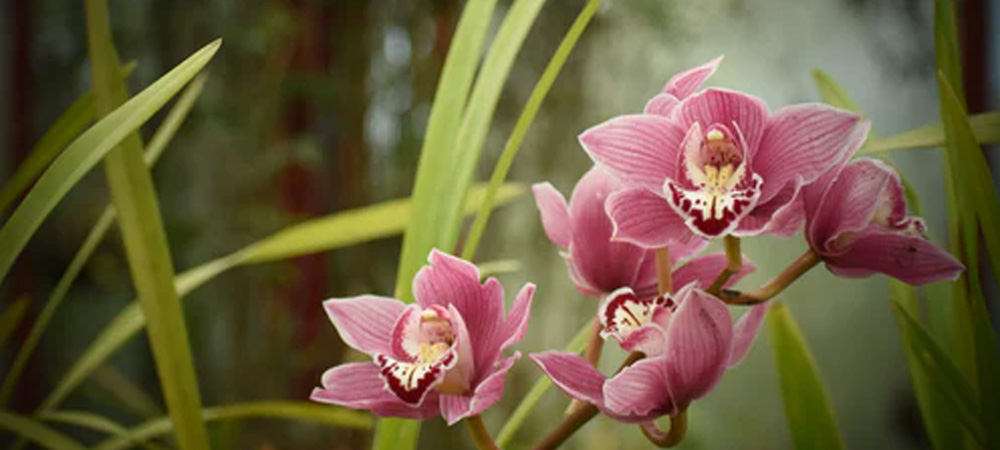
Controlling the Greenhouse Growing Environment
A good greenhouse environment, especially for orchids, requires the keeper to maintain four major conditions: Humidity, circulation of air, light levels, and watering.
Humidity
Orchids do best in humidity levels between 60 and 80%. Water trays are a good way to boost humidity, especially in the sunny times of year, but it does require occasional cleaning of the trays to prevent musty smells and other potential pest problems. Some prefer to mist the greenhouse with a fine spray at intervals. This system can cost a bit more but works very well and is often automatic.
A word of caution though, commercial misters do not have a fine enough spray and may lead to standing water and subsequent rot. Better to use something made to purpose.
Monitor your greenhouse humidity levels using a simple humidity gauge.
Ventilation
Air flow is easiest in summer, when a set of open vents or roll-up windows can do the trick. Closing these at night is a good idea though, even if temperatures are not expected to fall dangerously low – an unexpected wind or storm can easily damage the plants.
If the days are too dry, hot, and still for your orchids, you’ll need to help out through artificial means. Small fans placed below the plant level will suffice, but make sure that they do not point directly at the plants or blow too hard.
Spacing orchids farther apart also aids in circulation but can lower humidity. Your greenhouse should not smell stale or musty – if it does, you need more airflow.
Browse ventilation options here.
Lighting
Orchids like indirect light – not direct light – so a cover or some light shade is needed. Sometimes this is achieved through placement of the greenhouse itself, below tree cover or near a larger building, but if it is out in the open, you may need some netting or other covers to create the same protection.
Most orchids thrive in twelve to fourteen hours of light on a summer’s day, and from ten to twelve hours on a winter’s day.
In the UK, a south-facing greenhouse should have enough light in the summer, but even then it will need some help in the winter to provide the light the orchids need. A few fluorescent bulbs or grow light at the top of the greenhouse (15-20cm above the plants) should suffice.
You can use timers to automatically turn the light on and off, or you can set your own timer to do it manually – which is a great time to check on the plants and other conditions anyway.
Well-lit orchids should have bright, vibrant green leaves. Yellowing or dark brown on the leaves can be a sign of insufficient lighting (or perhaps another problem).
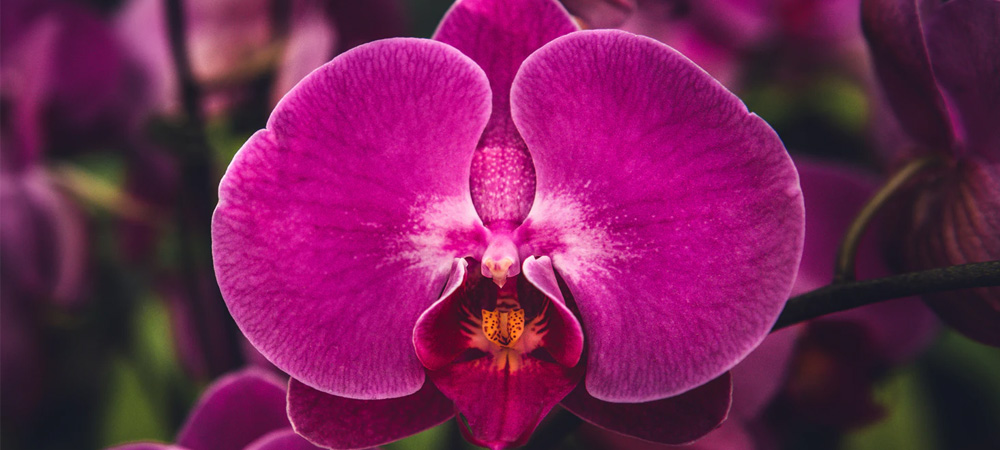
Watering
It is more difficult to water orchids (properly) than it is with other plants. Too much water and the roots will rot. Too little and the roots dry and the leaves fall. The goal is to keep them continually moist, but never sopping wet… just like the rainforest habitats where many of them developed.
Sound easy? Well, we’re not finished yet.
Some orchids like the growth medium to dry out between watering – completely dry out. Schedules can help reduce stress over this, but there is no substitute for a careful eye on things.
Your orchids won’t need as much water in the summer months if you live in a warmer climate, because the ambient air will be more humid than in colder areas. You’ll still need to water regularly though, and to check on the growing medium to make sure it is appropriate to the variety of orchid you are growing.
Mythbusting: No Ice Cubes
There is a practice out there that looks like a handy trick to keep your orchids watered, but is actually quite harmful to them; this is the ice cube method. The effect of having ice cubes on or near the growing medium is the same as putting your orchid in the middle of a cold draught. It will not like it and the damage caused to the roots might be enough to kill the plant off entirely.
An exception to this is if you have an orchid from ASDA or somewhere similar and you plan to throw it out once it is done blooming. For a long-living, healthy orchid though, avoid the ice cube method entirely.
Watering Varies by Growing Medium
The degree and method of watering will depend somewhat on the growing medium you are using. Sphagnum moss doesn’t retain water well and so it tends to dry out very easily and quickly. Once dry, it is difficult to get it to absorb water again. The key here is to water frequently (but in smaller amounts) to keep its limited water-retention ability running at its peak.
Bark chips dry out quickly too – at the top! – but will retain water for a much longer time at the bottom of the container. When checking for dryness in a bark-rich medium, always check at the bottom to make sure you are not overwatering based on a dry upper surface.
Peat moss is similar to bark, but as a rule of thumb, you only need to water it again when the top 5cm are dried out. This should maintain an optimal overall moisture level.
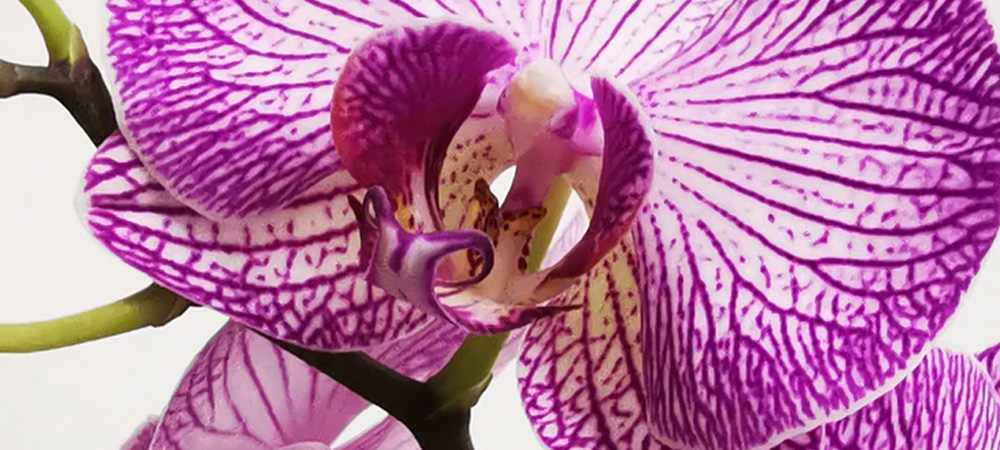
How to Avoid Common Issues
There are a few common problems that come along with growing orchids. A couple of them are the result of overwatering: mildew or fungus can develop on the growing medium. Thrips and root rot are two other problems common to orchids.
Don’t despair. These can be serious problems for your orchids, but they are not without their solutions.
Thrips
Thrips are tiny insects that crawl around the flowers and buds, eating away at the tissue. Midges look a lot like thrips and the two are often confused for each other. The good news is that both can be taken care of using the same methods. The best way to deal with them is with a three-tiered approach:
- Apply an insecticidal soap treatment to the tops and undersides of leaves, the stem and leaf connections, and (if possible) to the roots as well. Tip the plant upside down to drain away the excess from the leaf nodes.
- Follow this up with sticky tapes to trap the insects as they flee the soap.
- Predatory mites can also take a big bite out of a population of thrips, but this is only recommended for orchids in a greenhouse setting (you won’t want them infesting your house).
Some people prefer to drown out the thrips, but those who do this must be careful not to cause a fungal or rot problem with the excess water.
Mold, mildew and fungus
Mildew and fungus can be taken care of using the same method.
- Mix four teaspoons of baking soda in a gallon (4 litres) of water and add two teaspoons of insecticidal soap.
- Dampen a washcloth in the mixture and wipe the leaves of the orchid, gently covering as much of them as you can.
- Repeat twice a week until the mildew or fungus are gone. (You may want to continue for another week just to be thorough.)
If this method does not work, you may need to try a copper fungicide. If you do, carefully follow the directions on the package.
It is recommended to repot the orchid as well, once the problem has been taken care of, so you can use a fresh pot, fresh growing media, and you can also get at the roots for a quick and gentle wash. This should minimise the chances of the problem recurring. Dispose of the infected soil and disinfect the pot thoroughly (with a fungicide, baking soda mix, or a mixture of 30% bleach and 70% water) before reuse.
If these don’t work, you’ll have to get really tough. Throw out infected media and pots, and submerge the orchid in full strength hydrogen peroxide… if you keep it at all. Remember, these problems can jump from one plant to another too, so you’ll want to isolate infected plants and thoroughly clean the original area to protect the others.
Root rot
Root rot is a serious form of fungus or mould, and cannot be treated in the same way as discussed above. Orchids hit by root rot can take a year or more to recover. Identify root rot by the black, squishy roots that fall away from the plant. The black discolouration might even reach the stem.
Repotting orchids every two years can discourage root rot, as can maintaining a steady and appropriate amount of moisture in the growing media.
If you do find root rot on your orchids, follow these steps to fight it:
- Remove the plant from the pot and clean away all old growing media.
- Clean away (remove) all affected roots and tissue from the plant. (If the stem is infected, the plant is unlikely to recover and will likely need to be disposed of).
- Rinse the plant thoroughly with water.
- Apply fungicide to the tissues around the infected areas.
- Plant the orchid in sphagnum moss for a recovery period, paying close attention to moisture levels and ensuring it has plenty of fresh, circulating air.
- If the plant hasn’t recovered in two months, it is very unlikely to survive at all.
How to Get Better Blooms
The primary attraction people have to orchids is their spectacular flowers. Since they don’t flower all of the time (but wouldn’t that be wonderful?!), most orchid fans take care to get the most out of the flowering periods, making sure they are full and last as long as possible. One key to achieving this is proper fertilising of the growth media – but there are other tricks too.
- Light is key. An additional two hours per day can trigger a bloom.
- Phosphorous can encourage a strong, early bloom too.
- A balanced fertiliser (like 10-10-10 or 12-12-12) will ensure they have all they need when they do start to bloom. Use half of the recommended dose of fertiliser every month, as orchids don’t need (and don’t like) the full dose needed by many other plants.
Winter Care
As tempting as it may be to coax orchids into a winter bloom, we recommend you save the blooming for the summer months. During winter, care should be focussed on building up a healthy foundation prior to blooming.
In cooler areas, it is best to keep orchids inside throughout the winter months. Greenhouses are a great option too, if you are in an area of suitable temperatures. See the temperature guidelines above, and find out what temperature range best suits the variety you are growing. In general, night-time temperatures should be 5-10 degrees (Celsius) cooler than in the daytime.
The smaller the greenhouse, the easier it will be to heat and humidify, but it can be susceptible to a lack of air circulation – yet you want to avoid cold draughts! Insulating your greenhouse is a great way to keep heat contained, but it also cuts down on sunlight getting through, perhaps making lights a necessity. Insulation can also hamper circulation, requiring one or more small fans to compensate. Yes, it can be a juggling act, with little nudges here and there to keep things going well.
FAQs
How much light do orchids need when grown indoors?
Orchids require between 12 and 14 hours of light during the summer months, and 12 to 14 during the winter. In areas where natural light is insufficient, florescent or grow-lights can augment the natural light to make up the difference.
There is not difference in light requirements for indoor or outdoor growing.
How long do orchids bloom when grown indoors?
Orchids bloom indoors for an average of a little more than a month. With careful attention and ideal conditions, this period can be stretched out to several months, however, making the extra effort more than worth it for most people.
The species of orchid can make a big difference too, with brief-flowering orchids blooming for just a few weeks, and longer-blooming varieties displaying their flowers for up to two years!
Can you coax an orchid to bloom more than once per year?
Orchids generally bloom once per year, in a natural state, unless they are of a particular variety that blooms twice per year. It is possible to coax near-continual blooming from them though, if the conditions are optimal and you provide them with all that they need.
Read next:
 Author:
Author: